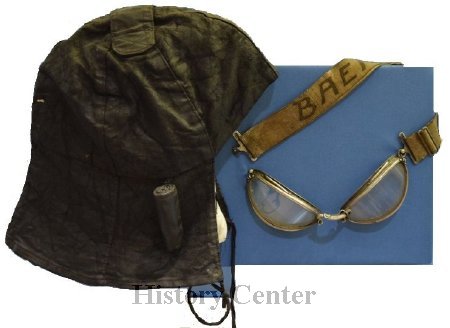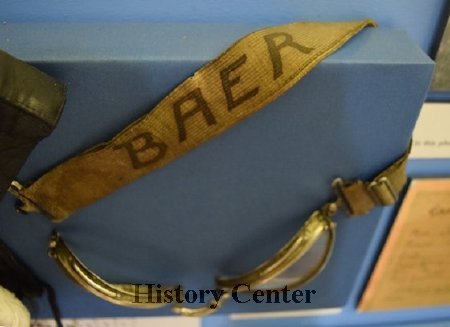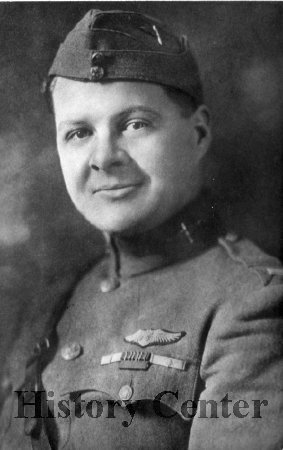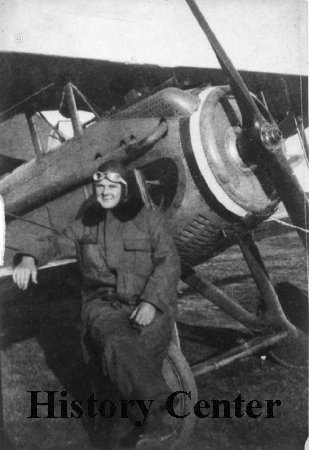Date:
c. 1930
Title:
Paul Baer Flight Gear
Description:
At the outbreak of World War I, Fort Wayne native Paul Baer (1895-1930) quit his job selling Cadillacs in Detroit and sailed for Europe where he enlisted in the French Air Service, the Lafayette Escadrille in February 1917. A year later, Baer joined the U.S. Army Air Service in February 1918. He was the first American war "ace," which refers to a military pilot credited with shooting down five enemy aircraft during aerial combat. In a letter to his father, A. E. Baer, dated 13 March 1918, Paul described his recent missions. During one on 12 March he "speared another Hun. It was in about the same place as the first one I killed. He was about ten or twelve kilometers within his lines when he fell. I saw him crash into the ground. He was one of a patrol of five Boche. Again, I had to do some scientific retreating. I had all of them on my tail. Their bullets were flying all around me. However, I got home." He eventually downed nine enemy planes (and about seven others which were unconfirmed) before he was shot down and captured by the Germans in May 1918. He remained in captivity until the end of the war. He was awarded the Legion of Honor and Croix-de-Guerre by the French government and the Distinguished Ser-vice Cross by the United States.
The aviator's goggles and flight cap were worn by Paul Baer in the interwar years. "BAER" is written on the goggles' elastic band, and cork lines the metal frames of the lenses. The cap is made of soft, unlined leather with a chin strap and ear pads. These were likely part of his kit during the time he was flying shuttle aircraft in China where he died in a crash in Shanghai on 9 December 1930. His body was returned to Fort Wayne where he was buried with military honors in Lindenwood Cemetery on 3 January 1931.
The aviator's goggles and flight cap were worn by Paul Baer in the interwar years. "BAER" is written on the goggles' elastic band, and cork lines the metal frames of the lenses. The cap is made of soft, unlined leather with a chin strap and ear pads. These were likely part of his kit during the time he was flying shuttle aircraft in China where he died in a crash in Shanghai on 9 December 1930. His body was returned to Fort Wayne where he was buried with military honors in Lindenwood Cemetery on 3 January 1931.




